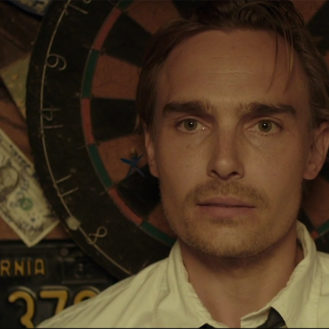By: Addison Wylie
It’s easy for the public to slap negative accusations on the political documentary 2016: Obama’s America. It’s almost asking for it with its timely release during the current presidential race.
I’m a critic who enjoys watching a variety of different movies but I’m also someone who hasn’t been keeping up with current politics nor knows a lot about US President Barack Obama’s history and what makes him tick.
In a way though, the documentary is almost wishing that every movie goer watching 2016: Obama’s America is like me. Directors Dinesh D’Souza and John Sullivan want to teach onlookers about Barack Obama’s upbringing – tracking all the way back to the life his Father led and how it could’ve possibly affected how Barack sees the world; as if we’re learning for the first time.
I also knew nothing about author Dinesh D’Souza and his book called The Roots of Obama’s Rage that Daniel Larison of The American Conservative labeled as “a bad conspiracy theory” and “the most ridiculous piece of Obama analysis yet” because of how it browbeats the President, his intentions and motivations. Dinesh isn’t a fan of Mr. Obama, to say the least.
You may agree with D’Souza or you may agree with Larison but with his documentary, D’Souza states some very interesting points that at least get the gears turning in your head.
He argues that because Obama had an absentee Father, many of his decisions in the White House are fuelled by wanting to impress someone who was never there.
Barack’s Father, who has passed away, led multiple lives with different women and fathered different children. According to D’Souza, in a young Barack’s eyes, Obama saw his Father as a man he could look up to. While Barack Sr. was away, Obama would be told stories by his Mother of how strong his Father was – further proving to Barack that this man could be an excellent role model. Stories that were either fabricated or exaggerated. Maybe not all of the stories, but at least the ones that seem prominent in the filmmakers’ eyes.
We’re led through the film by D’Souza, who gives us a brief history on his life including time spent working alongside a past President. He explains how he sees similarities in both Barack and himself. For example, they were both born in the same year and they both were married in the same year.
The doc works for a large portion not because of the durability of D’Souza’s arguments but because I genuinely think that the author/filmmaker is a curious and sharp guy. He’s confused by some decisions executed by Obama and just wants to know what made him sign off on these choices.
D’Souza also proposes a legit moral question about 2008’s political campaign. Did voters see this chance to vote for a black President as a way to fulfill one’s confidence and needs for a chance to say that they were a part of making history? It’s a question large quantities of people will immediately shut down but it does make you wonder if anyone voting had that hidden agenda.
Dinesh interviews people including doctors as well as friends and acquaintances of the Obama family. The interviews are gripping as Dinesh and the interviewee discuss possibilities that seem like they could be true because of recent evidence. Thoughts and questions tend to click and, because the talks are relaxed, the attitudes are easy going and feel more like discussions rather than interviews.
Then, the film hits that rough spot.
When Dinesh tracks down Barack’s distant half-brother, George, and confronts him, the attitudes change. Dinesh becomes aggressive – too aggressive. George is the one who actually appears more easy going.
The tone gets heavier in Dinesh’s voice and the questions become more personal. However, Barack’s half-brother gives quick answers and comebacks that Dinesh isn’t ready for. A lot of scrambling and rummaging through papers ensues on D’Souza’s part.
The film doesn’t learn from this mistake. By shifting tones, 2016: Obama’s America becomes less of a thought provoking cohesive thesis project and more of a heavy handed finger-pointing session. Even the lighting and the music during the interview segments become heavier and more dramatic.
The arguments also lose their punch.When discussing Obama’s history, D’Souza mentions Bill Ayers, a past friend of Barack who has a dangerous history. This insight, as well as info on his other friends, is brought up only to link scary words and scary names to the people who are close to Barack.
Case in point: When discussing Ayers’ plans to hatch a plot on the Pentagon, D’Souza tells us that Ayers and Osama Bin Laden have something in common.
It’s fine to bring up troubling information if it adds to Barack’s mystery and affects the foundation of finding out why Obama is flawed himself, but by wording the information in such a way that uses harsh words to garner kneejerk reactions out of an audience, discredits your film. At that point, you may as well use the argument that Barack isn’t a wise Presidential pick because Obama sounds like Osama.
2016: Obama’s America falls on its face because D’Souza and Sullivan insist on pushing at us to prove a point, but that personality doesn’t suit either director and doesn’t convince us of anything. The film has some interesting points about the current plummeting economy during this weak last third but the doc consistently talks at its audience rather than to it.
The first half of the film was getting this relaying of information right, the second half couldn’t be more wrong. Ironically, change did this passion project a disservice.
But, the most disappointing part about D’Souza and Sullivan’s documentary is that it ultimately proves that everyone who was judging the film by its promotional material before seeing the movie themselves, was right.




Leave a comment